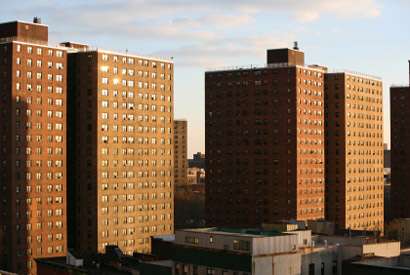Racial minorities live on the front lines of heat risk, study finds

(Medical Xpress)—Some racial groups are more likely to bear the brunt of extreme heat waves because of where they live, according to a new study by researchers at the University of California, Berkeley.
The findings, published today (Tuesday, May 14) in the journal Environmental Health Perspectives, highlight racial disparities at a time when the frequency and intensity of extreme heat waves is expected to increase with climate change.
Researchers used satellite imagery data to identify areas where there is no tree canopy to provide shade, and where half or more of the land is covered by heat-absorbing hard surfaces, such as pavement, concrete or roofing materials. Such land characteristics put residents at greater risk when the mercury rises because they exacerbate the heat, the study authors said.
The authors used U.S. Census data to reveal that the heat-prone neighborhoods were disproportionately populated by African Americans, Asians and Hispanics. Compared with their white counterparts, African Americans were about 50 percent more likely to live in these communities, while Hispanics were 37 percent and Asians a third more likely to do so.
"This study highlights a mechanism by which racial and ethnic minorities will likely suffer more from the effects of climate change," said study lead author Bill Jesdale, research associate in UC Berkeley's Department of Environmental Science, Policy and Management. "It may not be surprising that minorities live in inner cities, but this is the first paper to assess what that means in terms of heat vulnerability at a national level."
Rachel Morello-Frosch, a professor with joint appointments at the College of Natural Resources and the School of Public Health and the study principal investigator, noted that regional studies have identified similar trends, but seeing this residential segregation on a national scale was surprising.
"Segregation tends to concentrate racial and ethnic minorities into more densely populated urban areas," she said. "While some of this residential choice is based upon preference, a lot is based upon where people can afford to live."
Some steps that city planners can take to ameliorate the impact of climate change include planting more trees and lightening the coloring of roofs and pavements. When possible, replacing harder surfaces with more permeable materials can also help, the authors said.
"Planting trees and changing the heat-absorbing characteristics of our built environment may be crucial to protecting our public's health by mitigating heat risks, particularly in densely populated central areas of cities," said Jesdale.
More information: The Racial/Ethnic Distribution of Heat Risk-Related Land Cover in Relation to Residential Segregation (link to Environmental Health Perspectives paper)
Confronting the Climate Gap (article in Breakthroughs magazine)

















